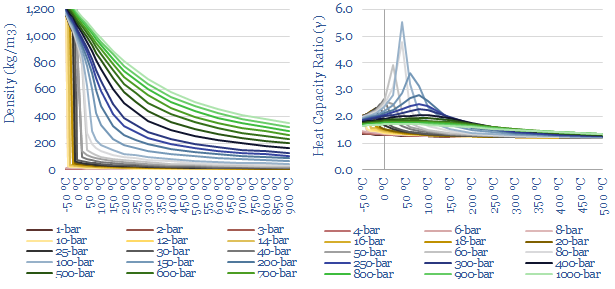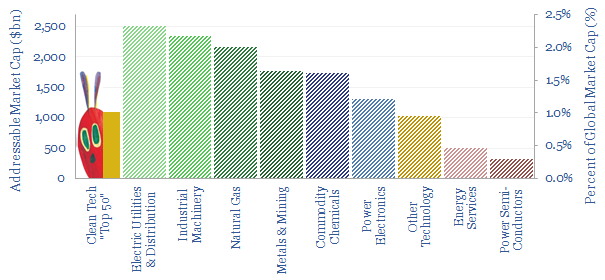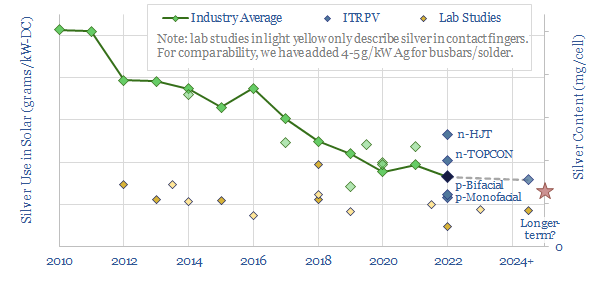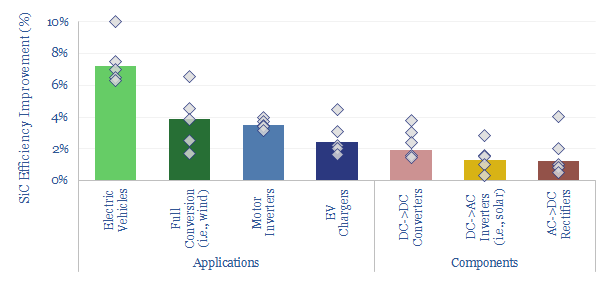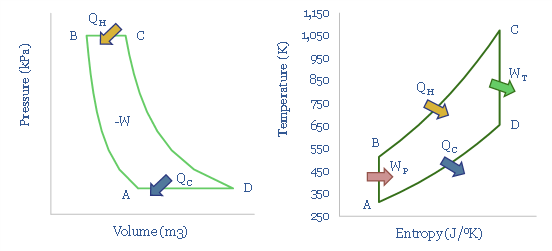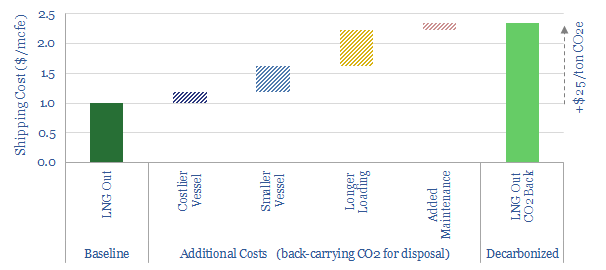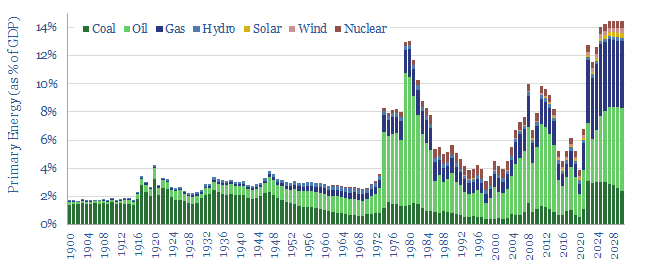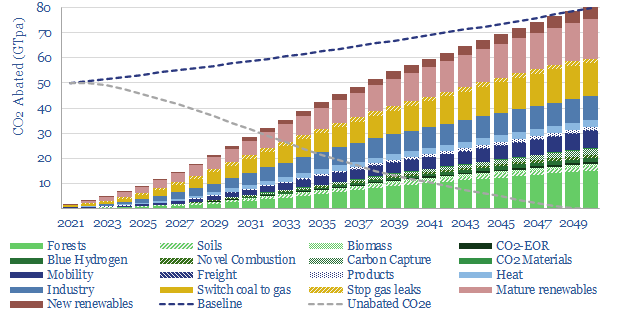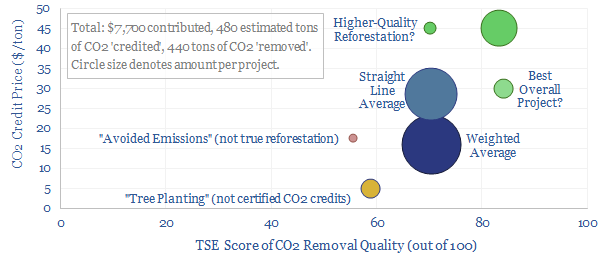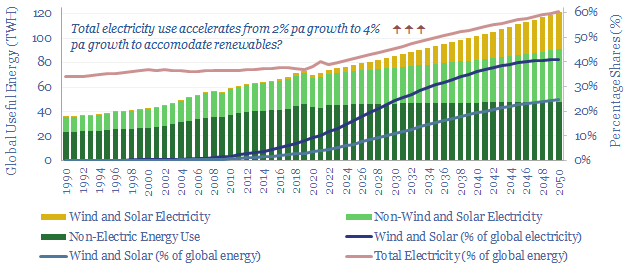-
CO2 compression: stranger things?
CO2 is a strange gas. This matters as energy transition will require over 120 GW of compressors for 6GTpa of CCUS. This 13-page note explains CO2’s strange properties, which helps to fine-tune appropriate risking factors for vanilla CCS, blue hydrogen, CO2-EOR, CO2 shipping, super-critical CO2 power cycles. There is also a wide moat around leading…
-
Energy transition: the very hungry caterpillar?
The universe of energy transition stocks seems small at first. 50 clean tech companies have $1trn in combined value, less than 1% of all global equities. But decarbonizing the world is insatiable. Consuming ever more sectors. We are now following over $15trn of market cap across new energies, (clean) conventional energy, utilities, capital goods, mining,…
-
Solar surface: silver thrifting?
Ramping new energies is creating bottlenecks in materials. But how much can material use be thrifted away? This 13-page note is a case study of silver use in solar. Silver intensity halved in the past decade, and could halve again? Conclusions matter for solar companies, silver markets, other bottlenecks.
-
Silicon carbide: faster switching?
Silicon carbide power electronics will jolt the energy transition forwards, displacing silicon, and improving the efficiency of most new energies by 1-10 pp. Hence we wonder if this disruptor will surprise to the upside, quintupling by 2027. This 12-page note reviews the technology, advantages, challenges, and who benefits?
-
Thermodynamics: Carnot, Rankine, Brayton & beyond?
Thermodynamic engines convert heat into work. This 13-page note explains different thermodynamic cycles, covering what we think decision makers in the energy transition should know. The theory underpins the appeal of electrification, ultra-efficient gas turbines, CHPs, advanced nuclear and new super-critical CO2 power cycles.
-
Decarbonized gas: ship LNG out, take CO2 back?
This note explores an option to decarbonize global LNG: (i) capture the CO2 from combusting natural gas (ii) liquefy it, including heat exchange with the LNG regas stream, then (iii) send the liquid CO2 back for disposal in the return journey of the LNG tanker. There are some logistical headaches, but no technical show-stoppers. Abatement…
-
Global energy: ten themes for 2023?
This 14-page note lays out our top ten predictions for global energy in 2023. Brace yourself for volatility, a recession due to energy shortages, and deepening bottlenecks on accelerating new energies? However, the biggest change for 2023 is that an energy super-cycle is now gradually coming into view.
-
Decarbonizing global energy: the route to net zero?
This 17-page report revisits our roadmap for the world to reach ‘net zero’ by 2050, after integrating over 1,000 pieces of research from 2019 through 2022. Our updated roadmap includes large upgrades for renewables and energy efficiency; less reliance on new energies breakthroughs; but most of all, simple, pragmatic progress is needed as bottlenecks and…
-
Nature based solutions: CO2 removals in 2022?
Is the nascent market for nature-based carbon offsets working? We appraised five projects in 2022, and contributed $7,700 to capture 440 tons of CO2, which is 20x our own CO2 footprint. This 11-page note presents our top five conclusions. Today’s market lacks depth and efficiency. High-quality credits are most bottlenecked. Prices rise further in 2023.…
-
Electrification: the rings of power?
Electrification is the most overlooked, most misunderstood opportunity in the energy transition. Hence this 10-page note aims to explain the upside, simply and clearly. Electricity rises from 40% of total useful energy today to 60% by 2050. Within the next decade, this adds $2trn to the enterprise value of capital goods companies in power grids…
Content by Category
- Batteries (89)
- Biofuels (44)
- Carbon Intensity (49)
- CCS (63)
- CO2 Removals (9)
- Coal (38)
- Company Diligence (94)
- Data Models (838)
- Decarbonization (160)
- Demand (110)
- Digital (59)
- Downstream (44)
- Economic Model (204)
- Energy Efficiency (75)
- Hydrogen (63)
- Industry Data (279)
- LNG (48)
- Materials (82)
- Metals (80)
- Midstream (43)
- Natural Gas (148)
- Nature (76)
- Nuclear (23)
- Oil (164)
- Patents (38)
- Plastics (44)
- Power Grids (130)
- Renewables (149)
- Screen (117)
- Semiconductors (32)
- Shale (51)
- Solar (68)
- Supply-Demand (45)
- Vehicles (90)
- Wind (44)
- Written Research (354)
